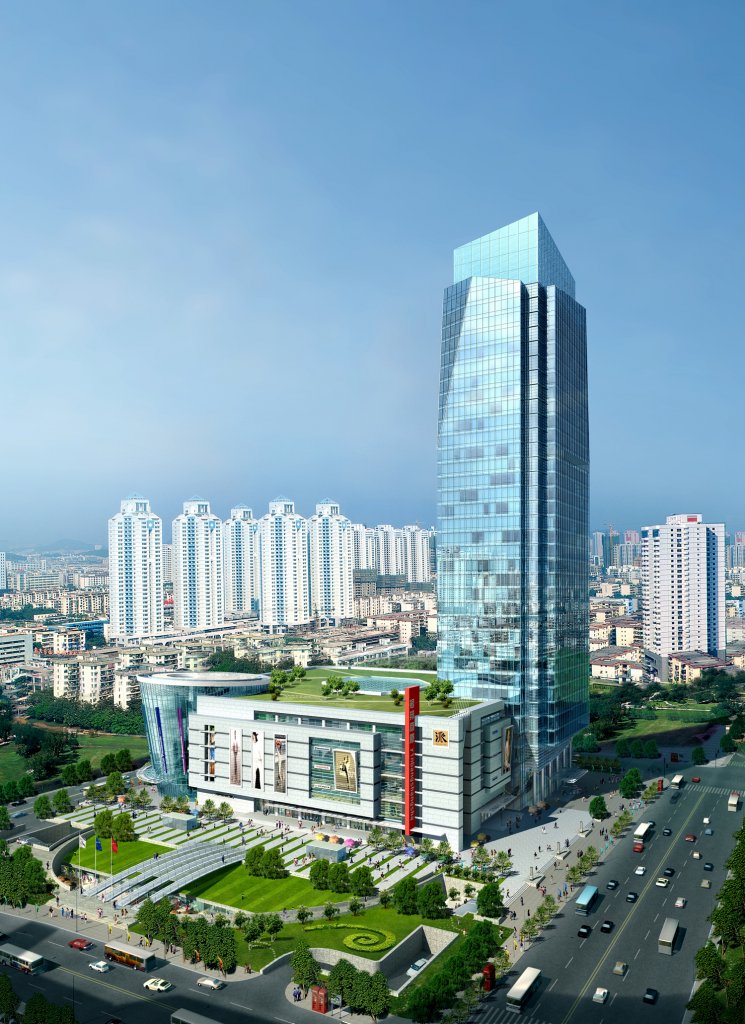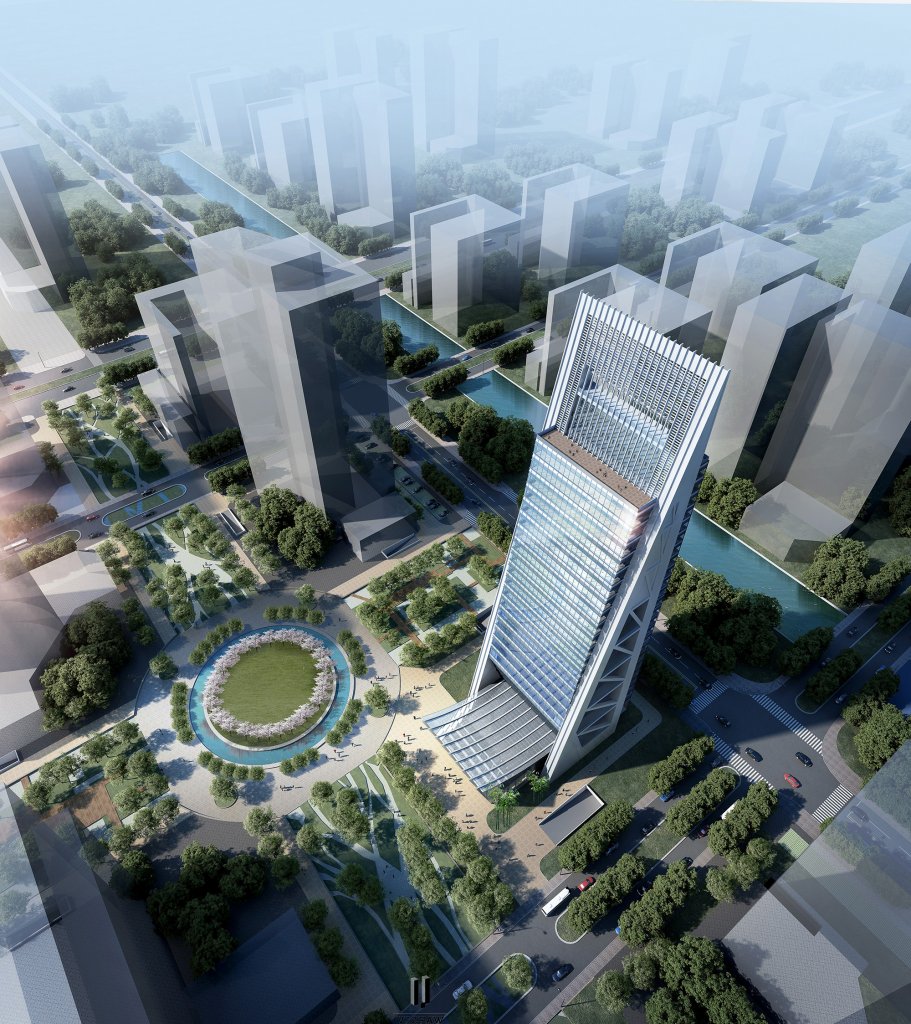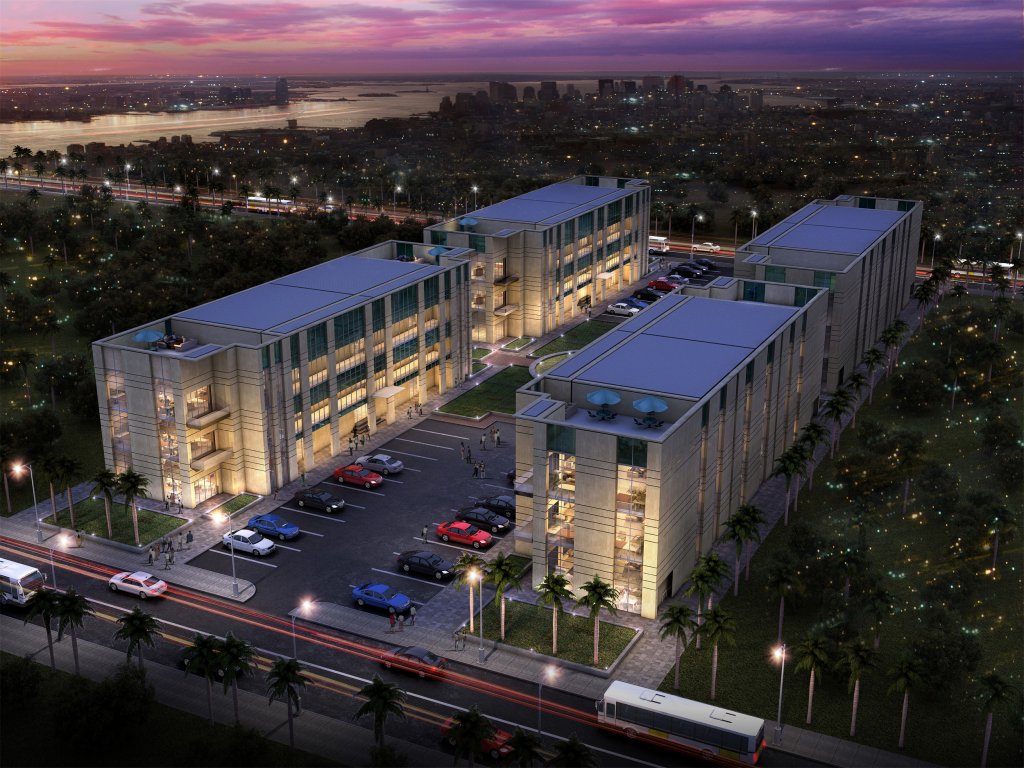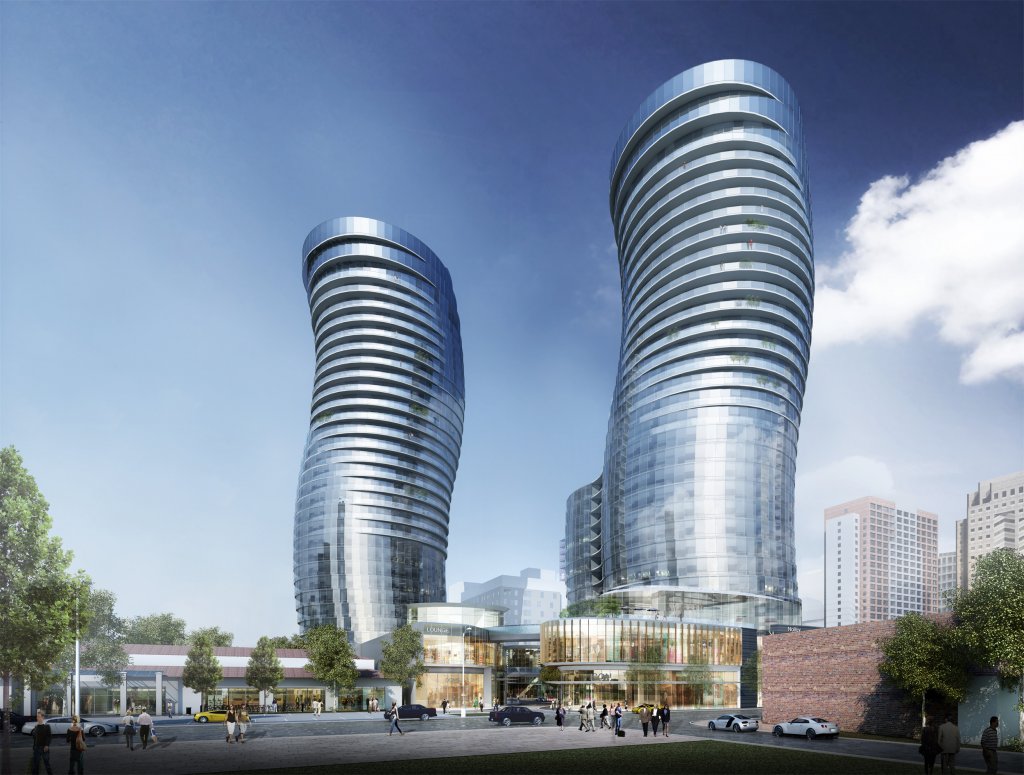If you’re diving into the world of 3D renders for your project, you might be scratching your head about how to handle the surrounding context. The good news? There’s no one-size-fits-all answer. It all boils down to what you want your render to convey. Are you all about showcasing your building front and center, or do you want to seamlessly blend into the neighborhood, or maybe just keep it real without being a distraction? Let’s break it down using four simple approaches: site photo composition, simple masses / gray blocks, existing models, modeling.
Site photo composition.
What is it? Blending 3D models into photos of your site, especially useful for aerial views.
Why go for it? It’s cost-effective and looks super natural and realistic. You need to provide high resolution images that have the same camera angle and mood as the renderings’.
Example: Imagine your design seamlessly integrated into a real photo – that’s photo-matching magic!

Simple Masses
What is it? Using simple gray blocks to represent neighboring buildings without much fuss. There are two ways of simple masses:
-Simple grey blocks, to show the surrounding context.
-Rough model blocks, to show the surrounding buildings’ rough structure, height, windows, etc. without specific details.
Why choose it? It’s easy on workload and often doesn’t cost extra. Plus, with some lighting tricks and post-work, you can keep it looking beautiful and real.
Example: Check out a render where your design shines while gray blocks fade into the backdrop – simplicity at its finest!

Existing models
What is it? Use most similar buildings from our library and integrate them into the background in accordance with the information gathered from Google Map.
Why consider it? When gray blocks seem too simple but you don’t need every detail, using library models is your middle ground.
Example: Imagine a rendering where library models fill in the gaps, making it visually appealing without stealing the show.

Modeling
What is it? Building the whole surrounding area in 3D, a bit on the heavy side workload and cost-wise.
Why think about it? If you need spot-on accuracy and don’t mind putting in the work, this one’s for you. Imagine a render with all the buildings around yours perfectly modeled – pretty neat!
Example: Take a peek at a render where every building nearby is clear and solid – modeling magic!

Combination of the Methods:
In the real world, we often mix things up. Think of it like cooking – a bit of this, a dash of that. You might use accurate models for landmarks, library models for nearby spots, and throw in some gray blocks for areas farther away. This combo creates renders that are just right – balancing purpose, visuals, and budget.
Conclusion:
Choosing how to handle the surrounding context in your 3D renders is like picking toppings for your pizza – it depends on your taste! Share this guide, and if you’ve got a project to chat about, give us a shout. Let’s make your 3D dreams come to life!